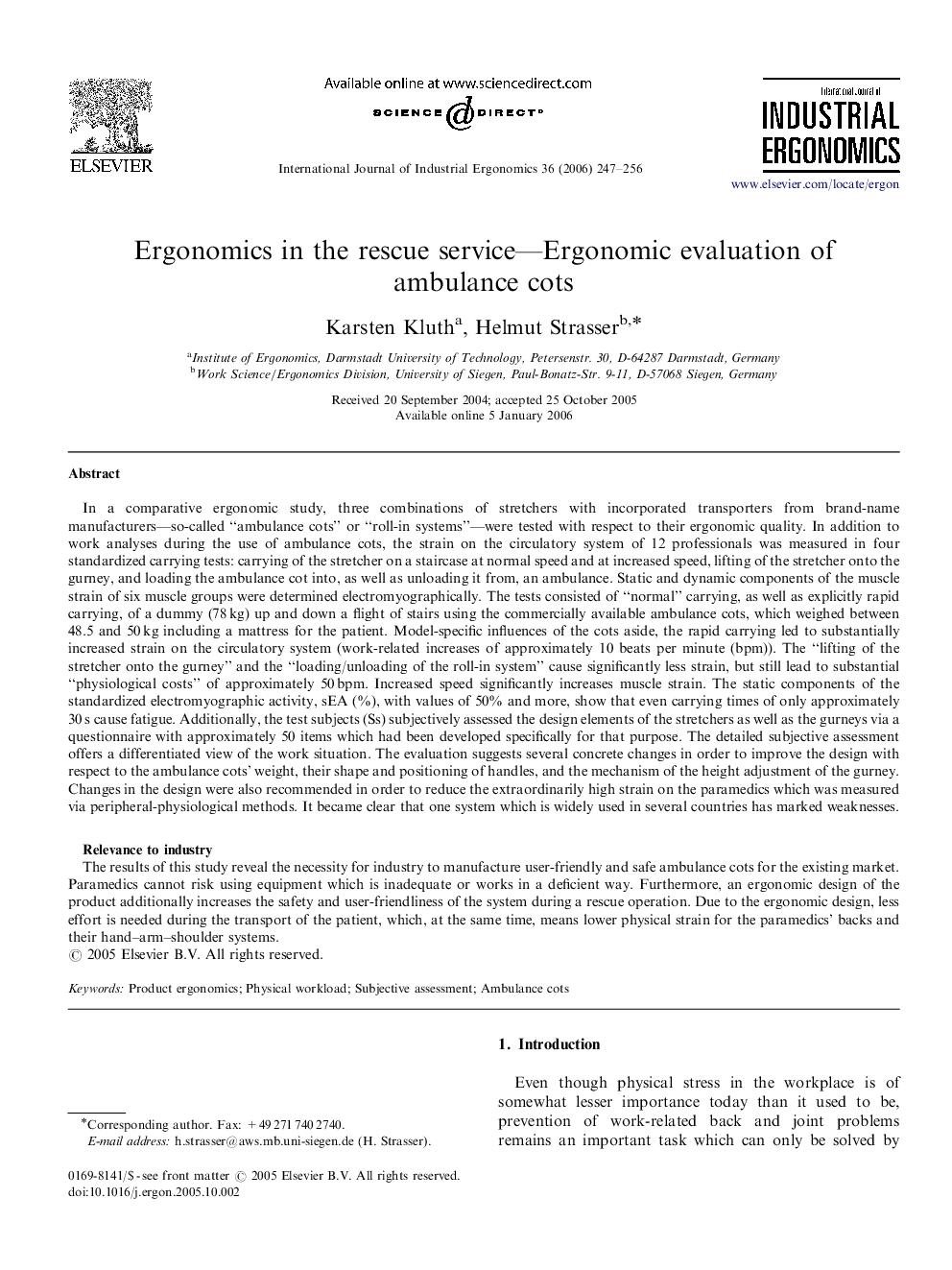| کد مقاله | کد نشریه | سال انتشار | مقاله انگلیسی | نسخه تمام متن |
|---|---|---|---|---|
| 1097061 | 1487493 | 2006 | 10 صفحه PDF | دانلود رایگان |

In a comparative ergonomic study, three combinations of stretchers with incorporated transporters from brand-name manufacturers—so-called “ambulance cots” or “roll-in systems”—were tested with respect to their ergonomic quality. In addition to work analyses during the use of ambulance cots, the strain on the circulatory system of 12 professionals was measured in four standardized carrying tests: carrying of the stretcher on a staircase at normal speed and at increased speed, lifting of the stretcher onto the gurney, and loading the ambulance cot into, as well as unloading it from, an ambulance. Static and dynamic components of the muscle strain of six muscle groups were determined electromyographically. The tests consisted of “normal” carrying, as well as explicitly rapid carrying, of a dummy (78 kg) up and down a flight of stairs using the commercially available ambulance cots, which weighed between 48.5 and 50 kg including a mattress for the patient. Model-specific influences of the cots aside, the rapid carrying led to substantially increased strain on the circulatory system (work-related increases of approximately 10 beats per minute (bpm)). The “lifting of the stretcher onto the gurney” and the “loading/unloading of the roll-in system” cause significantly less strain, but still lead to substantial “physiological costs” of approximately 50 bpm. Increased speed significantly increases muscle strain. The static components of the standardized electromyographic activity, sEA (%), with values of 50% and more, show that even carrying times of only approximately 30 s cause fatigue. Additionally, the test subjects (Ss) subjectively assessed the design elements of the stretchers as well as the gurneys via a questionnaire with approximately 50 items which had been developed specifically for that purpose. The detailed subjective assessment offers a differentiated view of the work situation. The evaluation suggests several concrete changes in order to improve the design with respect to the ambulance cots’ weight, their shape and positioning of handles, and the mechanism of the height adjustment of the gurney. Changes in the design were also recommended in order to reduce the extraordinarily high strain on the paramedics which was measured via peripheral-physiological methods. It became clear that one system which is widely used in several countries has marked weaknesses.Relevance to industryThe results of this study reveal the necessity for industry to manufacture user-friendly and safe ambulance cots for the existing market. Paramedics cannot risk using equipment which is inadequate or works in a deficient way. Furthermore, an ergonomic design of the product additionally increases the safety and user-friendliness of the system during a rescue operation. Due to the ergonomic design, less effort is needed during the transport of the patient, which, at the same time, means lower physical strain for the paramedics’ backs and their hand–arm–shoulder systems.
Journal: International Journal of Industrial Ergonomics - Volume 36, Issue 3, March 2006, Pages 247–256